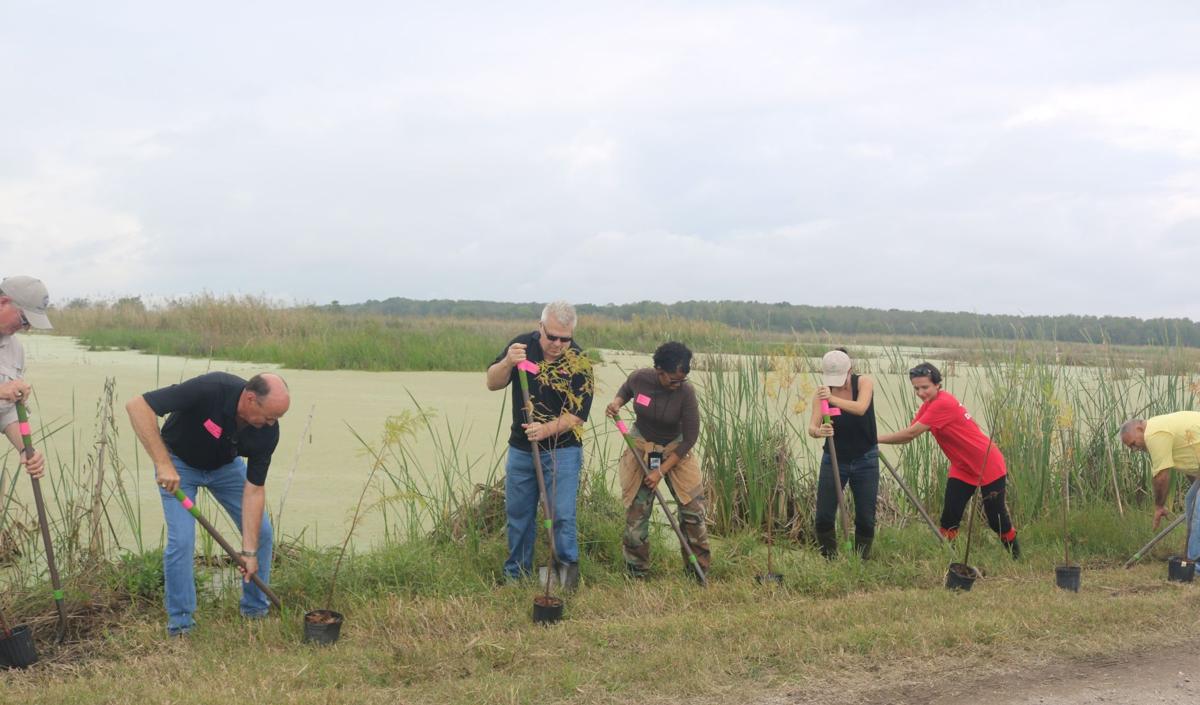
Lafourche Booking Log – November 11, 2019
November 12, 2019
Good luck to all our playoff teams
November 13, 2019Just over 60 volunteers planted 1,500 native bald cypress trees in the Pointe-aux-Chenes Wildlife Management Area over the course of two separate events last Thursday and Friday.
The events were part of an initiative by the Restore the Earth Foundation, a non-profit organization dedicated to restoring the Earth’s essential forest and wetland ecosystems.
Restore the Earth’s goal, along with partnered Louisiana Department of Wildlife and Fisheries, is to restore 4,000 acres of the Pointe-aux-Chenes Wildlife Management Area, said Taylor Marshall, Director of Sustainable Programs at Restore the Earth.
“It used to be a cypress forest that was degraded from saltwater intrusion after the levee broke during hurricanes Katrina and Rita. It took some time to repair it, but once it was repaired, the area inside — which is where we’re doing the plantings — significantly freshened,” Marshall said. “The conditions were such that Wildlife and Fisheries, who had been observing, managing and monitoring the land, believed that it was perfect for cypress restoration.”
Restore the Earth came to the area in 2015 to do some test plantings which turned out “extremely successful,” Marshall said.
“From there, we did the first 1,500 acres a few years back, and we’re continuing the restoration to complete the full 4,000,” she continued. “For the acreage that’s complete, those trees are about 10 to 12-feet tall. Some of them have seeds, which means that they’re regenerating naturally, and some even have birds’ nests. So, we see these as really great signs of success.”
To complete 4,000-acre restoration goal, Restore the Earth partners up with various businesses.
For the planting on Thursday, the nonprofit teamed up with Dow. Through its partnership with the International Olympic Committee, Dow is helping offset the carbon footprint of the Olympics.
Volunteers that day restored a portion of the 200 acres that Dow has committed to replenish.
On Friday, volunteers from Entergy, Shell and Domino Sugar, among other companies, helped cover some more of the acreage.
Commercial planters planted the remaining 200 acres.
Representatives from local parish governments and organizations were in attendance, too.
Restore the Earth does two planting events every year in the area, one in the fall and one in the spring, but the organization decided to hold these two events back-to-back because their partners were eager get involved, Marshall said.
“Wildlife and Fisheries is a trusted and longstanding partner of ours for over 10 years, and without them, this project wouldn’t be possible because it’s on their land,” Marshall said. “And we’re extremely grateful for all our corporate partners.”
The Pointe-aux-Chenes project is part of the nonprofit’s larger initiative.
“Our mission is to restore a million acres in the Mississippi Alluvial Valley, which is what we call ‘North America’s Amazon,’” Marshall said. “From an ecological standpoint, the Mississippi River Basin functions as the Amazon forest does, but for North America. So, it’s really critical to get some strategic restoration, and this Pointe-aux-Chenes project is part of that million-acre initiative.”
Marshall also touched on how important the restoration is for South Louisiana alone. “And what’s also significant about this project is that the last largest remaining landmass separating Terrebonne and Lafourche from open water, and that’s a combined 200,000 people,” she said.
“It’s one thing to levee-off an area, but if you still have open water inside of it or degraded wetlands, it’s not going to absorb winds as they come in for storm events,” Marshall continued. “And so that’s why this project is really significant because it has the ability to protect a lot of people. You need those healthy bald cypress trees in there so that they can provide that buffer of protection.”








